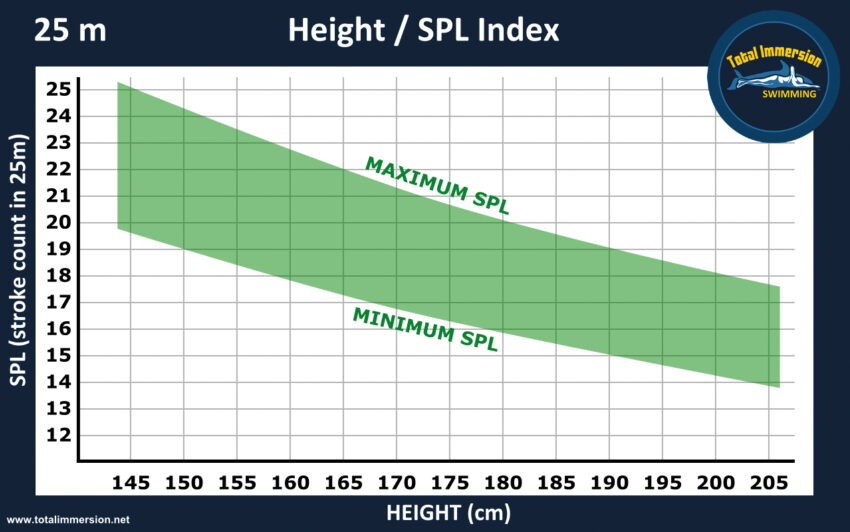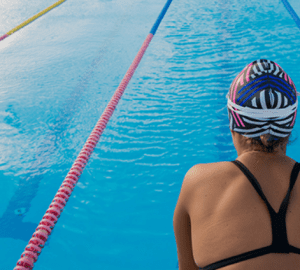Speed Through Efficiency
At the 2015 FINA World Swimming Championships in Kazan, Russia, Katie Ledecky became the first swimmer ever to win the 200, 400, 800 and 1,500-metre freestyles during a single World Championship. She also broke three world records, giving her a total of 10 in the last two years.
Following the meet, Outside magazine referred to her as “the best athlete in the world right now.” Only one other swimmer, the incomparable Shane Gould, has ever dominated across such a wide range of distances as Ledecky did in Kazan, setting world records from 100 to 1500 metres in 1971-72. However, elite-level swimming is far more competitive now than 40 years ago, with swimmers from over 20 countries capable of medalling in the World Championships, as against just a few countries in the 1970s.
According to Dr Michael Joyner, a physiologist at the Mayo Clinic and world-renowned authority on human performance, Ledecky’s swimming in the past two years “ranks with Jim Ryun’s sub 4-minute high school mile, Eddie Merckx’s cycling dominance, and race horse Secretariat’s Triple Crown as among the most remarkable endurance performances ever – and on a level beyond what Michael Phelps has done.”
To swim as she has, Ledecky must have a world-class “aerobic engine”, although this is difficult to quantify accurately as measuring aerobic capacity in swimming is far harder than for cycling or running. Thus one can only guess at how Ledecky’s fitness compares with that of her rivals.
However, one element in Ledecky’s swimming – her efficiency as measured in stroke length – is utterly transparent and precisely measurable. It’s also, unlike her physiological capacities, learnable. In each of her races, Ledecky displayed three critical skills you can begin developing in your next pool session:
1. Ledecky took significantly fewer strokes than her competitors. For instance in the 1500 metres, Ledecky took 38 strokes per 50-metre pool length. Silver medallist, Jessica Ashwood took 46. And while height is a key factor in stroke length, if both Ashwood (172cm tall) and Ledecky (180cm) stroked with equal efficiency, Ashwood should take only one more stroke over 50 metres.
2. Ledecky’s stroke count was stunningly consistent – from beginning to end of her races and at different distances. In the 1500, she swam an unvarying 38 strokes per length for 90 per cent of the race. And her average strokes per length (SPL) in the 200 metres was only one stroke higher than in the 1500 – though her pace per 100 was four seconds faster!
3. Ledecky took longer strokes when she most needed speed. In the only race in which Ledecky faced a serious challenge – coming from behind on the final 50 to win the 200 metres – Ledecky significantly increased the distance she traveled on each stroke, dropping to 39 SPL from 41 on the previous 50. In contrast, sliver medalist Federica Pellegrini (180cm tall) increased her stroke count from 42 to 45 on the last length, and bronze medalist Missy Franklin (188 cm) increased from 40 to 43.
In a 40-year study of elite swimmers, USA Swimming researchers identified the ability to maintain stroke length, while increasing stroke rate, as the strongest predictor, among all factors, of high level performance across all strokes and most distances. Ledecky went one better by increasing both length and rate, when pressed to summon her maximum speed.
Three steps to more speed through efficiency

Step one: Know your optimal count . . . then work toward it
Allowing for pushoff distance, at 38 SPL in the 1500 metres, Ledecky traveled 230 m (nearly 30 per cent greater than her height) on each full stroke cycle. This may surprise you, but if you’re 180cm tall – regardless of your age or fitness – you should be able to attain nearly the same stroke length as Ledecky. The difference in your speeds would mostly come from stroke rate. Ledecky’s world record of 15:25.48 translates to a rate or tempo of about .7 seconds per stroke. If you were to swim 1500 metres at half her speed, while matching her stroke count, it would simply mean maintaining a tempo of 1.4 seconds per stroke. In a race, as a less experienced and skilled swimmer, you might reasonably take four to six more strokes per 50 metres, and stroke at a rate between 1.0 and 1.2 strokes per second.
The ‘Green Zone’ chart (below) shows a height-indexed range of efficient counts we have created for non-elite swimmers – i.e. allowing an extra stroke or two per 25-metre pool length. At your next pool session, compare your count with those in the chart.
If your SPL is above the range for your height, you’re diverting energy into moving the water, instead of propelling you forward. Your first priority should be to gradually reduce SPL, as follows. Try the following:
Improve the ‘shape of your vessel’. Align head with spine and get your legs to draft behind your torso. Eliminate bubbles, noise, and splash from your stroke.
Slow tempo. Using a tempo trainer, slow your tempo until you can swim 25m repeats at the highest count in your range. Slow tempo by an additional .05 seconds and try 50m repeats. Practice in that tempo range until you can swim 25m repeats at the lowest counts in your Green Zone and 100 to 200m repeats at or below the highest count. Emphasise ease; avoid strain in trying to lower your count.
Step two: Increase SPL consistency
Swim for a continuous five to 10 minutes, checking stroke count regularly. How much does SPL increase from your first lap? If more than three strokes (i.e. from 18 to 21 SPL) work to keep SPL within that range, using a set like the following:
Swim 4 x 50m + 3 x 100m + 2 x 150m + 1 x 200m. Count strokes on each length. Rest 10 to 30 seconds between repeats. Assess as follows:
1. Did you stay within your Green Zone without strain?
2. How much did SPL increase between the 50s and the 200? A difference of three strokes or less (i.e. 18 SPL on 25s and no length higher than 21) shows stroke length consistency, a key attribute of steady pacing – and faster times.
Step three: Increase stroke rate
When you have good command of the first two steps, begin working on holding stroke count while increasing tempo – again with the aid of a tempo trainer – using a set such as the following. The example below assumes a 25-metre Green Zone of 18 to 21 strokes.
Experiment until you find a tempo at which you can easily complete 25 metres in 18 strokes. Then swim a series of 25s, increasing tempo by .01 on each successive repeat. For how many repeats can you maintain 18 SPL? Five is good. Ten is great. You can repeat this exercise at any count in your Green Zone. At the higher counts, your range of tempos should be faster. For example, if you can hold 18 SPL between tempos of 1.30 and 1.25 seconds/stroke, you might be able to hold 20 SPL between tempos of 1.20 and 1.15 seconds/stroke.
These steps and exercises will help improve, in some measure, all of the speed skills that made Katie Ledecky the best athlete in the world. Happy laps!








